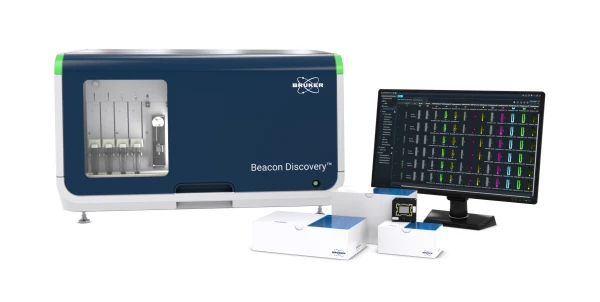Cannabis Consumables and Critical Advancements in Testing Standardization
As the cannabis world continues to expand, testing standardization has become increasingly important for producers and consumers of cannabis products
Quality assurance and quality control have become central priorities in ensuring cannabis products are both safe and genuine. Whether products are cannabis infused edibles or hemp plant material ready for processing, knowing the potency, contaminant levels, and other key components is critical. Although third party testing labs can provide the performance needed for product analysis, many operate using custom-built methods and in-house validation processes. Analytical methods standards organizations such as AOAC International are making significant headway in providing scientists and laboratories with consensus-driven, verified processes for universal food safety testing.
Why is Cannabis QA/QC Testing Important?
The range of available cannabis products has grown by epic proportions. Cannabis extracts, hemp seed oils, and full-spectrum tinctures, are just a few of the products derived directly from plants. Infused oils, cannabis butter, and hemp-infused drinks are a mere sampling of the many types of edible products available.
Legal cannabis products are tested and labelled for potency content, THC and CBD concentrations, and other relevant dosage information. The presence of pesticides, residual solvents, and other contaminants are also tested to ensure threshold levels are not exceeded, typically required by law.
Testing is absolutely necessary to ensure unsafe products don’t make their way into consumer hands, and potency information is particularly important for the health and well-being of medical patients.
What are the Challenges Behind QA/GC Testing?
States formulate their own test result parameters which may include, for example, the range and concentration thresholds for pesticides, as well as the prescribed platform for analysis, such as LC- or GS-MS. Each state has a system that employs state testing regulatory bodies or the input from independent accreditation services (or both) in order to verify that testing labs stay compliant.
Resources are available to help guide lab performance, and the majority of testing labs generate in-house methods – partly due to the absence of universal methodologies. Labs may perform proficiency testing (PT) and participate in inter-laboratory comparison (ILC) tests to help them remain compliant and to provide their customers with confidence in the accuracy of results. In the end, the absence of universally accepted methods and protocols means that testing labs function in state of autonomy.
The Goal of Universal Testing Standards
Consensus testing bodies such as the AOAC aim to create standards as agreed, repeatable protocols for performing analytical testing. The standards contain technical specifications and criteria designed to be used consistently between testing labs and locations.
To develop these standards, experts from industry, government, non-profits, and academia are brought together to participate in workgroups focused on specific food safety testing needs. The objectives are to first define what is needed in a test, then evaluate the reliability and accuracy of testing solutions submitted by scientists. A standard that passes this “consensus” is accepted as valid by the global analytical community.
Consensus Standards for Cannabinoid Testing in Hemp
With passage of the 2018 Farm Bill, the USDA was directed to develop a regulatory framework for hemp production in the US. This ultimately gave rise to the US Domestic Hemp Production Plan and the stipulations of the Interim Final Rule, a key component being the establishment of analytical methods for testing THC levels in hemp.
The new Farm Bill defined legal hemp as containing <0.3% THC, and in the wake of the bill difficulties immediately surfaced regarding how legal hemp would be tested and legally verified. In the field it would prove crucial to identify and maintain consistency in hemp crops to avoid legal issues and resource losses. In the lab, methods and instruments would need to be accurate and sensitive to ensure reliable THC measurements. Many products and technologies have emerged to address the testing needs although no globally recognized standard method has existed to this point for analyzing THC levels in hemp.
In September 2019, AOAC’s Cannabis Analytical Science Program (CASP) finalized plans for an Official Standard for Testing Cannabinoids in Hemp. Standard Methods Performance Requirements (SMPRs) were written for quantitation of cannabinoids in plant materials of hemp (low THC varieties Cannabis sp). Following a Call for Methods and expert panel evaluation, a Method for Cannabinoid Analysis in Hemp was approved in April 2020 — an important milestone for the domestic hemp program.
A standard method such as this may strengthen hemp cultivation and reduce resource costs. Beyond this, the standard will streamline hemp testing and may ultimately enhance the safety and quality of the myriad products (CBD and otherwise) derived from hemp.
Consensus Standards for Measuring Cannabinoids in Edibles
Many additional consensus standards programs administered by AOAC are in motion. For instance, having established SMPRs for quantitation of cannabinoids in edible chocolate, CASP released a Call for Methods (now closed) in order to accrue submissions for testing evaluation. This program is part of a larger effort in providing strategic food testing methods across the cannabis field.
Summary
Many of the consensus standards programs to date have focused on marijuana and hemp plant materials. A very important standards evaluation is currently underway for detection of Aspergillus sp. in cannabis and cannabis products. The establishment of these consensus testing standards will be a critical step in monitoring pathogenic mold contamination — a persitent and damaging threat in the industry.
As cannabis products proliferate with an increasing presence of cannabinoid-infused oils and other “authentic” food items, further consensus standard efforts will undoubtedly emerge. Counterfeit, fraudulent, and potentially dangerous products must no doubt be met with strong analytical defenses to support legal producers and to ensure the well-being of the growing number of patients and consumers.
Visit the LabX Cannabis Laboratory Application Page
View the Future Trends in the Cannabis Industry Interactive Infographic
View more LabX resources
Updated December 3, 2021










